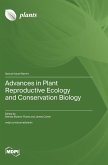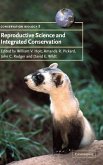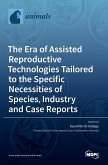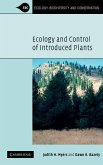Short description/annotation
Places the wealth of data that have been collected on plants into the unifying framework of game theory.
Main description
Evolutionary biologists have produced a solid body of evidence to explain patterns of diversification, both within and among species. Recent textbooks are weighted towards studies of animals, which is surprising given that plants are ideally suited for answering evolutionary questions. Plants do not stand up and walk away and they can easily be cloned, transplanted or potted for experiments. This book aims to set the record straight by placing the wealth of data that have been collected on plants into the unifying framework of game theory. This allows a test of the theory of natural selection in some cases, while in other cases highlighting the need for additional data collection and theoretical development. It is the authors' hope that many students will take on this challenge and help the study of the evolutionary ecology of plants to develop as a mature, predictive science.
Table of contents:
1. Optimisation models; 2. Investments, returns and proportionality; 3. Gain curves: efficiency factors; 4. Evolutionary stable strategies: sex allocation strategies as an example; 5. Size at flowering; 6. Reproductive effort; 7. Size and number trade-offs: the evolution of seed size; 8. Sex allocation theory for partially selfing plants; 9. Size dependent sex allocation; 10. Sex ratios in dioecious plants; 11. Outcrossing, selfing or no sex at all(?)33;; 12. Heterostyly; 13. Selective embryo abortion; 14. Attractiveness to pollinators; 15. Parent-offspring conflict; 16. Intragenomic conflict; 17. Group and kin selection; Appendix 1. Mathematical help; References.
Hinweis: Dieser Artikel kann nur an eine deutsche Lieferadresse ausgeliefert werden.
Places the wealth of data that have been collected on plants into the unifying framework of game theory.
Main description
Evolutionary biologists have produced a solid body of evidence to explain patterns of diversification, both within and among species. Recent textbooks are weighted towards studies of animals, which is surprising given that plants are ideally suited for answering evolutionary questions. Plants do not stand up and walk away and they can easily be cloned, transplanted or potted for experiments. This book aims to set the record straight by placing the wealth of data that have been collected on plants into the unifying framework of game theory. This allows a test of the theory of natural selection in some cases, while in other cases highlighting the need for additional data collection and theoretical development. It is the authors' hope that many students will take on this challenge and help the study of the evolutionary ecology of plants to develop as a mature, predictive science.
Table of contents:
1. Optimisation models; 2. Investments, returns and proportionality; 3. Gain curves: efficiency factors; 4. Evolutionary stable strategies: sex allocation strategies as an example; 5. Size at flowering; 6. Reproductive effort; 7. Size and number trade-offs: the evolution of seed size; 8. Sex allocation theory for partially selfing plants; 9. Size dependent sex allocation; 10. Sex ratios in dioecious plants; 11. Outcrossing, selfing or no sex at all(?)33;; 12. Heterostyly; 13. Selective embryo abortion; 14. Attractiveness to pollinators; 15. Parent-offspring conflict; 16. Intragenomic conflict; 17. Group and kin selection; Appendix 1. Mathematical help; References.
Hinweis: Dieser Artikel kann nur an eine deutsche Lieferadresse ausgeliefert werden.








